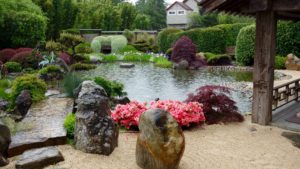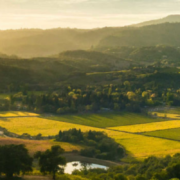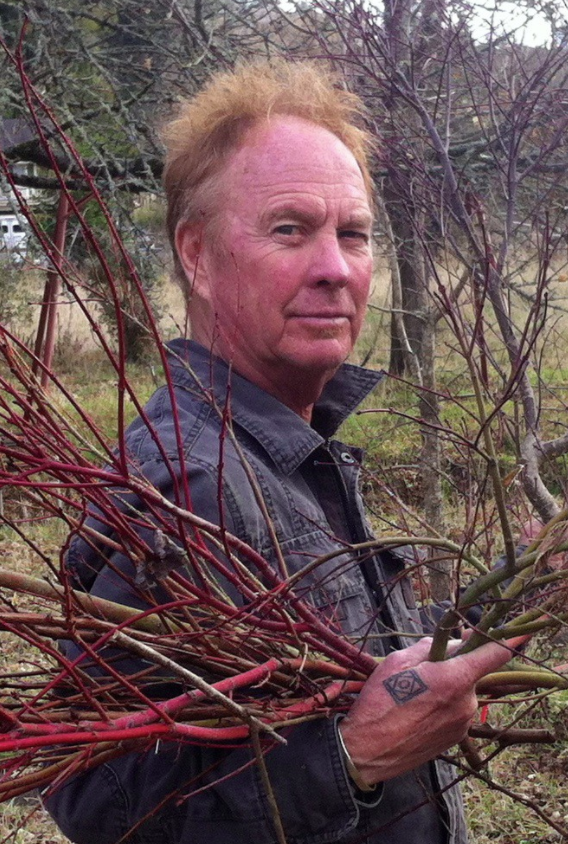Garden Journal for Spring 2016
by Michael Alliger
Master Pruner
Welcome to the spring edition of the Osmosis garden journal! As we know, calendar spring begins in March as does the emerging of new growth on plants. However, from a plant grooming standpoint we consider spring to be from approximately mid- April through mid-June here in Sonoma County, Northern California. During this period the tender new growth of plants begins to harden (toughen) up. It is at this point that we can plan our first prunings. Because everything’s happening at once, things can get rather rambunctious without a plan. At Osmosis, we map out a strategy of pruning priorities based on a number of factors. These are: plant role, plant requirements, future development, and degree to which new growth is contrary to garden’s design.
Regarding role, the key or focal trees are noted first while background plants are last to be addressed. There is middle category of auxiliary plantings (sheared shrubs, smaller accompaniment trees/shrubs) that are attended to on an as-needed basis.
With respect to timing, it is helpful to distinguish flower growth from foliar growth. Some plants like plum or camellia flower before shoot and leaf growth. As flowers are finishing, foliar growth begins. Therefore a plant like camellia, if properly tended to the year before, will need no pruning until new shoots have emerged and hardened up after flowering. Though grooming (deadheading, cleaning, insect inspection, etc.) may be ongoing, Rhododendrons, flowering slightly later than camellias, are pushed back on the pruning calendar a little further and for the same reason.
Some trees have special characteristics which must be respected. Japanese maples for example have very thin, delicate leaves as well as thin skin-like bark. Because of this tenderness, it’s important to prune Japanese maples before the onset of prolonged heat and drought, especially those exposed to afternoon sun. Vigorous males will sometimes push out a second flush of growth requiring pruning in summer, but beware.
With any pruning it is paramount to keep in mind the purpose of the pruning, usually two-fold: containment and aesthetics. Since scale (relative size) is so important to Japanese-style gardens the spring cutback is critical. For a natural look this reduction of height and width must be accompanied by thinning in order to achieve balance of the three dimensions including density.
In regards to containment, garden pines such as Japanese black and mugo are growing vigorously in spring. Their growth manifests as long tubular-like shoots known as candles. It is from these candles that needles emerge. They are also the mechanism by which pines accelerate their extension in space. A note on flowering: pines produce both cones often found on the candle tip and pollen sacs around the candle. At the right (or wrong) time these sacs can emit an almost suffocating amount of yellow pollen if brushed. Mugo pines that have achieved their appropriate design height should have all the candles cut back. This is known as candling. Some thinning may also be required to keep the plant from becoming too internally crowded. As far as black pines go there are scores of theories as to how best achieve containment and the desired styling. They all begin with the candles: whether or not to remove them; if so, when; and to what degree. At Osmosis we remove all except the smallest candles. This pruning neatens the tree, keeps it right-sized and leads to future development into the Japanese style. This style is achieved via the secondary growth that occurs over the summer following removal of candle. For maximum value of secondary growth it’s important that candling occur neither too early nor too late. The approximate time for candling is at the unfolding of the needles from the candle.
There are many other trees and shrubs at Osmosis, which are among those pruned as needed. They are tough enough to take harsher conditions and have few to no special requirements. These include among others juniper, nandina, oak, magnolia and dogwood. Many of these will be addressed in our summer edition.
Grounds Care
 Along with weeding the most important early spring task in the garden is the testing and preparation of the drip irrigation system. Each valve, line and emitter must be checked to be certain that water is being appropriately delivered to needy plants. In a garden (5 gardens, actually!) the size of Osmosis this annual refurbishing can be quite a project though we couldn’t get along without it. Along with clearing and checking the lines, the emitters and laser tubing are repositioned to compensate for the past year’s root growth.
Along with weeding the most important early spring task in the garden is the testing and preparation of the drip irrigation system. Each valve, line and emitter must be checked to be certain that water is being appropriately delivered to needy plants. In a garden (5 gardens, actually!) the size of Osmosis this annual refurbishing can be quite a project though we couldn’t get along without it. Along with clearing and checking the lines, the emitters and laser tubing are repositioned to compensate for the past year’s root growth.
Also at this time begins the monthly fertilizing of the Japanese bog iris and other water plants.
Rhododendrons often require additional acid fertilizer the regular application of which is begun as the flowers fade usually in middle May.
The very popular chamomile beds at Osmosis barely make it through the summer what with the nocturnal visits of raccoons and possums as well as the ever- disturbing tactics of gophers and moles. Consequently, these beds are re-done each spring at this time. Other shallow plantings such as woodland moss, elfin thyme and Irish moss are done now as well.
As rains diminish the containerized plantings which are not on irrigation must receive regular waterings and a schedule is set up for this.
Please enjoy this precious season as plant growth returns reminding us of our place as nature’s stewards.






